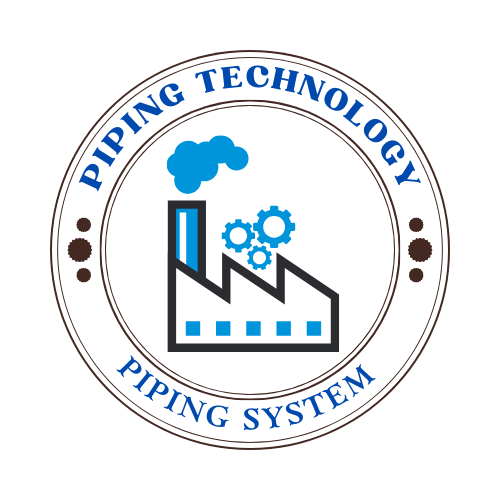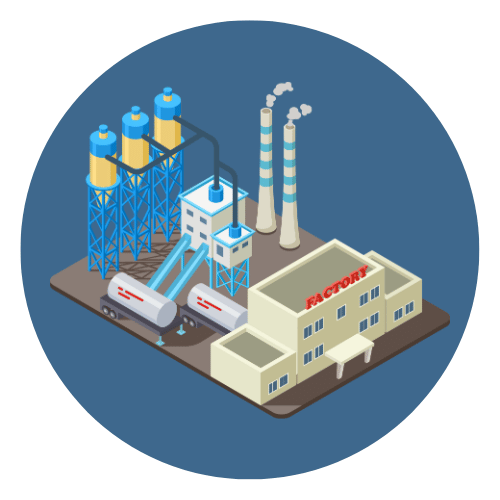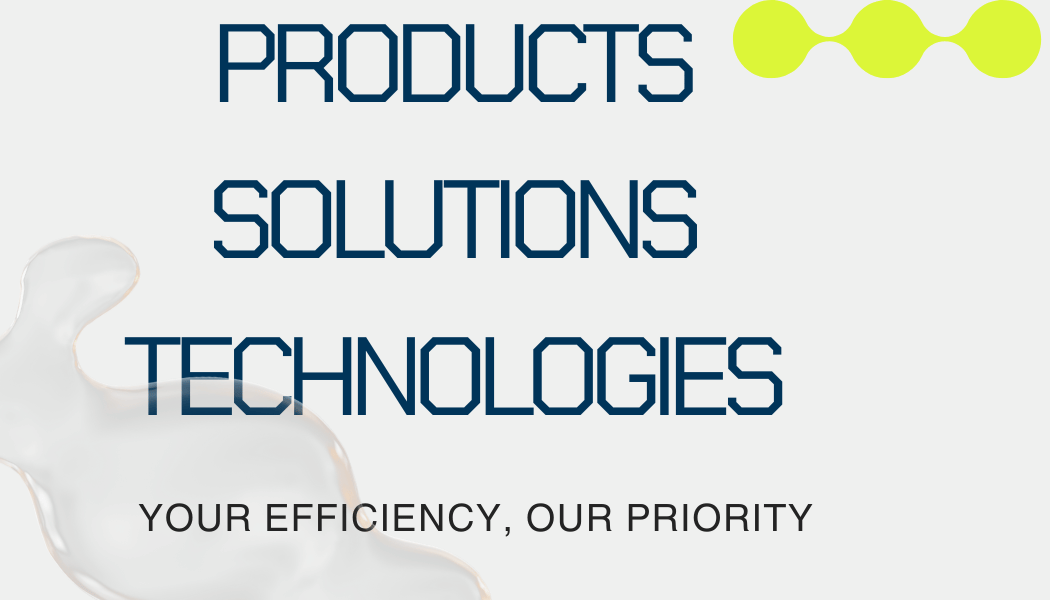Diaphragm Pump Symbol p&id
Contents
- 1 I. Understanding P&ID Symbols
- 2 II. Types of Pumps and Their P&ID Symbols
- 3 III. Auxiliary Components and Symbols
- 4 IV. How to Read and Interpret Pump Symbols on P&IDs
- 5 V. Best Practices for Using Pump Symbols in P&IDs
- 5.1 1. Follow Standard Symbol Conventions
- 5.2 2. Differentiate Between Pump Types
- 5.3 3. Clear Labeling and Tagging
- 5.4 4. Show Connections and Flow Direction
- 5.5 5. Include Ancillary Components
- 5.6 6. Ensure Readability and Simplicity
- 5.7 7. Include Key Details in Legends
- 5.8 8. Show Interactions with Other Systems
- 5.9 9. Highlight Critical Pumps
- 5.10 10. Regular Review and Updates
- 6 VI. Standards and Regulations for Pump Symbols in P&IDs
- 6.1 1. ISA 5.1 – Instrumentation Symbols and Identification
- 6.2 2. ISO 10628 – Flow Diagrams for Process Plants
- 6.3 3. ANSI/ASME Y32.11 – Graphic Symbols for Fluid Power Diagrams
- 6.4 4. DIN EN ISO 1219 – Fluid Power Systems and Components
- 6.5 5. API 610 – Centrifugal Pumps for Petroleum, Petrochemical, and Natural Gas Industries
- 6.6 6. PIP (Process Industry Practices) PIC001 – Piping and Instrumentation Diagram Documentation Criteria
- 6.7 7. NFPA 20 – Standard for the Installation of Stationary Pumps for Fire Protection
- 6.8 Key Takeaways:
- 7 Conclusion
Piping and Instrumentation Diagrams (P&IDs) are essential tools used in the design and operation of industrial processes. They provide a detailed representation of the various components and equipment within a system, ensuring that engineers and operators have a clear understanding of how the system functions. Among the most critical elements in these diagrams are pumps, which play a vital role in fluid movement and process control.
The importance of pumps in industrial systems cannot be overstated. They are integral to operations across industries such as oil and gas, chemical manufacturing, water treatment, and power generation. Proper representation of pumps symbol P&IDs helps in accurate system design, troubleshooting, and maintenance.
The primary purpose of pump symbol P&ID to standardize the visualization of different pump types and their auxiliary components. This ensures consistent communication between designers, engineers, and operators, reducing the risk of errors and improving overall system efficiency.
I. Understanding P&ID Symbols

What are P&ID Symbols?
P&ID symbols are graphical representations used to depict the various components of a process system, including pumps, valves, instruments, and pipelines. Each symbol corresponds to a specific piece of equipment or control device, allowing for clear and efficient diagramming of complex industrial processes.
How P&ID Symbols Standardize Communication
P&ID symbols create a common language for engineers, designers, and operators, ensuring that everyone involved in a project understands the system layout and components. This standardization minimizes errors, improves collaboration, and facilitates smoother project execution and maintenance.
Key Standards for P&ID Symbols (ISA, ISO, ANSI)
P&ID symbols are governed by several key standards to ensure uniformity and clarity across industries:
- ISA (International Society of Automation): Provides detailed guidelines for instrumentation and control symbols.
- ISO (International Organization for Standardization): Establishes international standards for graphical symbols in diagrams.
- ANSI (American National Standards Institute): Defines standards for process symbols used in the United States, ensuring consistency across domestic projects.
II. Types of Pumps and Their P&ID Symbols

1. Centrifugal Pumps
Description:
- Most widely used for fluid transfer.
- Operates by converting rotational energy into kinetic energy.
- Suitable for low-viscosity fluids.
Symbol:
- A simple circle with a single triangle or arrow inside, indicating fluid rotation.
- Sometimes, a motor is shown adjacent to the pump.
Common Applications:
- Water supply, cooling systems, chemical processing.
2. Positive Displacement Pumps
Description:
- Moves fluid by trapping a fixed volume and forcing it through the discharge.
- Ideal for high-viscosity fluids and precise applications.
Symbol Variants:
- Reciprocating Pump: A rectangle with a piston symbol inside.
- Rotary/Gear Pump: Two interlocking circles or gears.
- Diaphragm Pump: A circle with two opposing triangles.
Common Applications:
- Oil and gas, chemical dosing, and hydraulic systems.
3. Vacuum Pumps
Description:
- Removes gas from a chamber to create a partial vacuum.
- Essential for processes that operate under low-pressure conditions.
Symbol:
- A rectangle with an arrow pointing downwards or a combination of triangle and rectangle shapes.
Common Applications:
- Semiconductor manufacturing, distillation, and degassing.
4. Peristaltic (Tube) Pumps
Description:
- Uses rollers to compress flexible tubing to push fluid through the tube.
- Excellent for handling corrosive or shear-sensitive fluids.
Symbol:
- A circle with a looped or coiled shape inside to indicate the tube.
Common Applications:
- Medical applications, food processing, and pharmaceuticals.
5. Lobe Pumps
Description:
- Similar to gear pumps but uses lobes instead of gears.
- Suitable for viscous materials and solids-laden fluids.
Symbol:
- Two interlocking oval or rounded shapes within a circular boundary.
Common Applications:
- Food processing, pulp and paper, and chemical processing.
6. Screw Pumps
Description:
- Uses one or more screws to move fluid through the pump body.
- Handles high-viscosity fluids with minimal pulsation.
Symbol:
- A rectangle with a helical or screw shape inside.
Common Applications:
- Oil and gas, marine, and power generation.
7. Submersible Pumps
Description:
- Fully submerged in the fluid it pumps.
- Typically used for drainage, sewage, or slurry applications.
Symbol:
- A circle with a downward-pointing arrow and a wave symbol beneath it.
Common Applications:
- Wastewater treatment, mining, and flood control.
8. Turbine Pumps
Description:
- A high-speed pump that uses turbine-like blades to impart energy to the fluid.
- Handles low-flow, high-head applications.
Symbol:
- A circle with multiple internal curved blades or vanes.
Common Applications:
- Power generation, boiler feed, and fuel transfer.
9. Axial Flow Pumps
Description:
- Moves fluid parallel to the pump shaft, ideal for large volumes at low pressure.
Symbol:
- A propeller-like symbol inside a rectangle.
Common Applications:
- Water circulation, irrigation, and flood management.
10. Jet Pumps
Description:
- Uses high-velocity fluid to entrain and lift other fluids.
- Common in well systems.
Symbol:
- A small nozzle shape connected to a larger pipe symbol.
Common Applications:
- Well drilling, dewatering, and fuel transfer.
III. Auxiliary Components and Symbols

Strainers and Filters
Strainers and filters are critical components that remove debris and contaminants from fluid streams. Their P&ID symbols typically consist of a bowtie shape or a mesh-like icon.
Valves
Valves control the flow and pressure within a system. Symbols for valves vary based on type, such as gate, globe, ball, and check valves. Each has a distinct representation, ensuring clarity in system design.
Pressure Gauges
Pressure gauges monitor and display the pressure within pipelines. Their P&ID symbols usually show a circle with a needle or dial, indicating the measurement function.
Flow Meters
Flow meters measure the flow rate of liquids and gases. They are represented by circles with intersecting lines or arrows, symbolizing the measurement of flow.
Including these auxiliary components in P&IDs enhances system understanding and ensures comprehensive documentation for industrial processes.
IV. How to Read and Interpret Pump Symbols on P&IDs

Piping and Instrumentation Diagrams (P&IDs) are essential for understanding the layout and operation of process systems. Pumps play a crucial role in these systems, and their symbols on P&IDs provide critical information about their type, configuration, and connections.
1. Understanding the Basics of P&ID Symbols

- P&IDs use standardized symbols to represent pumps, ensuring consistency and clear communication across teams.
- Each pump symbol typically includes:
- Pump Shape: Represents the general type of pump.
- Flow Arrows: Indicate the direction of fluid movement.
- Motor or Driver Symbols: Show the pump’s power source.
- Labels and Tags: Provide unique identifiers for easy reference.
2. Common Pump Types and Their Symbols
| Pump Type | Symbol Description | Symbol |
|---|---|---|
| Centrifugal Pump | Circle with a triangle or curved arrow inside. | ◯ ➤ |
| Gear Pump | Two interlocking circles representing gears. | ⚙️⚙️ |
| Diaphragm Pump | A circle with two opposing triangles inside. | ◇ |
| Reciprocating Pump | Rectangle with a piston-like shape inside. | 🔲 |
| Lobe Pump | Two interlocking ovals. | ◎◎ |
| Screw Pump | Rectangle with a screw shape inside. | ⬛ with ➰ inside |
| Vacuum Pump | Rectangle with downward arrows. | ⬛⬇ |
| Submersible Pump | Circle with downward arrows and waves. | ◯⬇ 🌊 |
3. Key Elements to Look For
- Pump Driver:
- A motor or turbine symbol adjacent to the pump indicates the driving mechanism.
- Example: A circle with “M” represents an electric motor.
- Inlet and Outlet Lines:
- Piping leading into and out of the pump is often depicted with lines and arrows.
- Solid lines typically represent process piping, while dashed lines may indicate auxiliary or control connections.
- Flow Direction:
- Arrows on the piping show the direction of fluid flow.
- Ensure arrows align with the intended process flow to avoid errors.
- Tags and Identification:
- Pumps are labeled with unique tags such as P-101 or P-202.
- The first letter (“P”) typically denotes a pump, while the following numbers indicate the equipment number.
4. Interpreting Associated Components
- Valves:
- Control the flow of fluid and may be placed before or after the pump.
- Strainers/Filters:
- Represented by a Y-shaped or basket symbol, they protect pumps from debris.
- Pressure/Flow Instruments:
- Pressure gauges and flow meters are often connected to the pump to monitor performance.
5. Example Interpretation
Example P&ID Section:
- Symbol: ◯ ➤ (Centrifugal Pump)
- Tag: P-101A
- Driver: Circle with “M” (Electric Motor)
- Inlet Line: Solid line with an arrow pointing to the pump.
- Discharge Line: Solid line with an arrow pointing away from the pump.
- Bypass Valve: Dashed line connecting the inlet and outlet lines with a valve.
Interpretation:
- P-101A is a centrifugal pump driven by an electric motor.
- Fluid enters from the left, passes through the pump, and exits to the right.
- A bypass valve allows fluid to circulate around the pump if needed.
V. Best Practices for Using Pump Symbols in P&IDs
1. Follow Standard Symbol Conventions
- Adopt Industry Standards – Use standardized pump symbols from industry references such as:
- ISA (International Society of Automation) – ISA 5.1
- ISO 10628 – Flow diagrams for process plants
- ANSI/ASME – P&ID symbols
- Consistency – Ensure symbols are used consistently throughout all diagrams to avoid confusion.
2. Differentiate Between Pump Types

- Use distinct symbols for different types of pumps:
- Centrifugal Pumps – Circular with an internal arrow indicating rotation.
- Positive Displacement Pumps – Rectangular with rotating gears, pistons, or lobes.
- Vacuum Pumps – Indicated with downward arrows or additional lines to show suction.
3. Clear Labeling and Tagging
- Unique Identification – Assign a unique tag (e.g., P-101, P-202) to each pump for easy identification.
- Functional Description – Include labels describing the pump’s function (e.g., Feed Pump, Transfer Pump).
- Cross-Referencing – Ensure the tag corresponds with the equipment list or Bill of Materials (BOM).
4. Show Connections and Flow Direction
- Inlet and Outlet Markings – Clearly indicate the inlet and outlet of each pump.
- Flow Arrows – Use arrows to show the direction of fluid flow.
- Suction and Discharge Lines – Differentiate between suction and discharge piping with line thickness or color (if possible).
5. Include Ancillary Components
- Valves and Strainers – Display associated valves, strainers, and filters.
- Instrumentation – Show sensors (temperature, pressure, flow) that monitor the pump.
- Control Elements – Indicate automatic or manual controls, such as pressure relief valves or bypass lines.
6. Ensure Readability and Simplicity
- Avoid Overcrowding – Space symbols appropriately to avoid clutter.
- Scaling – Keep pump symbols proportional to surrounding equipment for clarity.
- Annotations – Use text annotations for additional details without complicating the diagram.
7. Include Key Details in Legends
- Symbol Key – Provide a legend explaining all pump symbols used.
- Abbreviations and Codes – Define all abbreviations and codes for pump types, materials, and operational status.
8. Show Interactions with Other Systems
- Control Systems – Link pump symbols to control panels, motor drivers, or Variable Frequency Drives (VFDs).
- Protection Systems – Indicate safety devices such as alarms, vibration monitors, or emergency shutdown systems.
9. Highlight Critical Pumps
- Redundancy and Critical Pumps – Use different line weights or symbols to indicate critical pumps or redundant systems (e.g., standby pumps).
- Parallel or Series Configurations – Show pumps operating in parallel or series with connecting lines.
10. Regular Review and Updates
- Audit P&IDs – Periodically review P&IDs to ensure symbols are up to date with system changes.
- Revise for Modifications – Immediately update diagrams if pumps are replaced, modified, or relocated.
VI. Standards and Regulations for Pump Symbols in P&IDs
Adhering to established standards and regulations for pump symbols in Piping and Instrumentation Diagrams (P&IDs) ensures consistency, safety, and effective communication across industries. Below are the key standards that govern the use of symbols and diagram representation in process industries:
1. ISA 5.1 – Instrumentation Symbols and Identification
- Overview: The ISA (International Society of Automation) 5.1 standard is the most widely recognized guideline for creating and interpreting P&IDs.
- Application:
- Defines the shapes, lines, and symbols for pumps, valves, and instruments.
- Provides a systematic way to tag and identify equipment, making diagrams easy to understand.
- Importance: Ensures uniformity in diagrams across different facilities and projects, minimizing misinterpretation.
2. ISO 10628 – Flow Diagrams for Process Plants
- Overview: This international standard defines the representation of process flow diagrams (PFDs) and P&IDs.
- Application:
- Specifies pump symbols and their placement within the process flow.
- Includes guidelines for using standard geometric shapes and notations for different types of pumps.
- Importance: Facilitates global collaboration and reduces errors in the engineering and design phase.
3. ANSI/ASME Y32.11 – Graphic Symbols for Fluid Power Diagrams
- Overview: The American National Standards Institute (ANSI) and the American Society of Mechanical Engineers (ASME) developed this standard to regulate symbols used in fluid power systems.
- Application:
- Focuses on hydraulic and pneumatic pump symbols.
- Emphasizes the representation of actuators, reservoirs, and control systems.
- Importance: Standardizes how fluid power pumps are depicted, ensuring clarity in hydraulic and pneumatic circuits.
4. DIN EN ISO 1219 – Fluid Power Systems and Components
- Overview: This European standard is similar to ANSI/ASME Y32.11 but focuses on fluid power system representation.
- Application:
- Defines symbols for fluid pumps and related control equipment.
- Widely used in the EU and other international markets.
- Importance: Promotes interoperability between different engineering teams and suppliers.
5. API 610 – Centrifugal Pumps for Petroleum, Petrochemical, and Natural Gas Industries
- Overview: The American Petroleum Institute (API) developed this standard specifically for centrifugal pumps in heavy industries.
- Application:
- Establishes mechanical design requirements and P&ID representation for centrifugal pumps.
- Focuses on reliability and performance under high-pressure conditions.
- Importance: Critical for the oil and gas, petrochemical, and energy sectors.
6. PIP (Process Industry Practices) PIC001 – Piping and Instrumentation Diagram Documentation Criteria
- Overview: Developed by industry experts, this standard complements ISA 5.1 and ISO 10628 by adding best practices for creating P&IDs.
- Application:
- Includes pump symbols and guidelines for piping, valves, and process equipment.
- Provides practical examples of P&ID layouts.
- Importance: Offers industry-specific enhancements to standard P&ID development.
7. NFPA 20 – Standard for the Installation of Stationary Pumps for Fire Protection
- Overview: The National Fire Protection Association (NFPA) governs fire pump installations and their representation in diagrams.
- Application:
- Dictates how fire protection pumps should be illustrated in P&IDs.
- Includes requirements for auxiliary equipment and safety systems.
- Importance: Ensures fire safety compliance and helps in the design of fire protection systems.
Key Takeaways:
- Global Consistency: Standards like ISO 10628 and ISA 5.1 promote consistency across international projects.
- Safety and Compliance: API 610 and NFPA 20 focus on pumps operating in critical applications, ensuring safety and regulatory compliance.
- Clarity in Design: Adopting ANSI/ASME and DIN standards reduces ambiguity and enhances communication between engineering teams.
Conclusion
Understanding and interpreting pump symbols on Piping and Instrumentation Diagrams (P&IDs) is essential for designing, operating, and maintaining process systems. Each pump type has a distinct symbol that reflects its operation, ensuring clear communication between engineers, operators, and maintenance teams.
By adhering to standard conventions, clearly labeling equipment, and maintaining accurate diagrams, organizations can enhance system reliability, streamline troubleshooting, and improve overall efficiency. Properly representing pumps on P&IDs not only aids in project execution but also ensures long-term safety and operational integrity.
For those working in industries such as oil and gas, petrochemicals, and manufacturing, mastering pump symbols is a fundamental skill that contributes to successful project management and plant operation.

Contents1 I. What Are Instrumentation Symbols?1.1 Key Elements of an Instrumentation Symbol:1.2 Why Are They Important?2 II. Purpose and Importance of Instrumentation Symbols2.1 1. Universal Communication Tool2.2 2. Simplifying Complex Systems2.3 3. Supporting Design and Engineering2.4 4. Enabling Maintenance and Troubleshooting2.5 5. Enhancing Safety and Compliance3 III. Overview of Instrumentation Drawing Types3.1 1. P&ID (Piping […]

Contents1 I. What is Hazard Symbol?2 II. Types of Hazard Symbols3 III. Regulatory Frameworks4 IV. Understanding Hazard Symbols4.1 1. Recognizing the Symbol Shapes and Colors4.2 2. Key Hazard Symbols and Their Meanings4.3 3. How to Respond to Hazard Symbols4.4 4. Location and Application of Hazard Symbols4.5 5. Importance of Training and Awareness5 V. Safety Practices […]

Contents1 I. What is weld symbols chart ?2 II. Basic Components of Weld Symbols2.1 1. Reference Line2.2 2. Arrow2.3 3. Basic Weld Symbols2.4 4. Tail2.5 5. Dimensions and Other Data2.6 6. Above and Below the Reference Line3 III. Types of Welds and Their Symbols3.1 1. Fillet Weld3.2 2. Groove Weld3.3 3. Square Groove Weld3.4 4. […]

Contents1 I. Basics of Hydraulic Diagram Symbols1.1 1. What Are Hydraulic Symbols?1.2 2. Standards for Hydraulic Symbols1.3 3. How Symbols Convey System Functionality2 II. Categories of Hydraulic Symbols2.1 1. Actuators2.2 2. Pumps and Compressors2.3 3. Valves2.4 4. Lines and Connections2.5 5. Filters and Conditioners2.6 6. Accessories3 III. How to read Hydraulic Diagrams3.1 1. How to […]

Contents1 I. What Are Valve Symbols?1.1 1. Definition and Purpose1.2 2. Why Valve Symbols Are Important1.3 3. Basic Structure of Valve Symbols1.4 4. Common Uses in Industry2 II. Basics of Valve Symbols3 III. Types of Valve Symbols4 IV. How to Read Valve Symbols4.1 1. Understanding the Basics4.2 2. Common Valve Symbol Components4.3 3. Interpreting Different […]

Contents1 I. What is a Check Valve in Pneumatics?2 II. How Does a Check Valve Work?2.0.1 1. Forward Flow:2.0.2 2. Closing Mechanism:2.0.3 3. Reverse Flow Prevention:2.0.4 Internal Components of a Check Valve:2.0.5 Pressure Differential:2.0.6 Summary of Check Valve Operation:3 III. Check Valve Pneumatic Symbol Diagram 3.0.1 Basic Symbol of a Check Valve:3.0.2 Detailed Breakdown of the […]

Contents1 I. What is a Battery Symbol?2 II. The Anatomy of a Battery Symbol2.0.1 A. Basic Structure2.0.2 B. Variations in Design2.0.2.1 Importance of Standardization and the Role of ISO3 III. Different Battery Symbol Meanings3.0.1 A. Fully Charged Battery Symbol3.0.2 B. Charging Battery Symbol3.0.3 C. Low Battery Warning Symbol3.0.4 D. Battery Error Symbol4 IV. Battery Symbols […]

Contents1 I. What are welding symbols ?1.1 Basic Components of Welding Symbols2 II. Basics of Welding Symbols2.0.1 Components of a Welding Symbol2.1 Welding Symbols Meaning2.1.1 Key Aspects of Welding Symbols3 III. Types of Welding Symbols3.1 Basic Weld Symbols3.2 Fillet Weld Symbol3.2.1 Characteristics:3.3 Groove Weld Symbol3.3.1 Types of Groove Welds:3.4 Plug and Slot Weld Symbols3.4.1 Characteristics:3.5 […]

Contents1 Symbol limit switch2 Lever Switch3 Limit Switch NO3.1 Characteristics of a Normally Open Limit Switch:3.2 Applications:3.3 Symbol:4 Limit Switch NC4.1 Characteristics of a Normally Closed Limit Switch:4.2 Applications:4.3 Symbol:5 Spring Switch5.1 1. Electrical Switches:5.2 2. Railway Track Switching:5.3 3. Mechanical Systems:5.4 Characteristics and Applications: Symbol limit switch The symbol limit switch in schematics typically […]


 Automation System
Automation System  Energy Engineeing
Energy Engineeing  Instrumentation System
Instrumentation System  Mechanical Engineeing
Mechanical Engineeing  Piping Technologies
Piping Technologies  Transportations
Transportations  Manufacturing
Manufacturing  Training Material
Training Material 